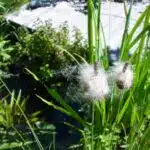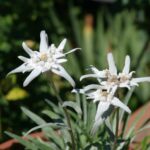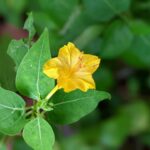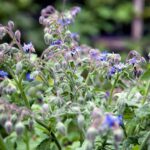Love-in-a-mist, also known as nigella damascena, is an incredible annual flower that is beloved by gardeners and florists alike. Its soft and delicate petals are a beautiful addition to any garden, and its easy care makes it an ideal choice for anyone who wants to enjoy the beauty of this flower. For those looking to learn more about how to grow and care for love-in-a-mist, this article will provide helpful tips and advice on how to get the most out of this unique flower.
As a specialist in botany and gardening, I have spent many years studying the growth and care of love-in-a-mist. The key to getting the most out of these flowers is understanding their needs and providing them with proper nutrition and environment. In this article I will share my knowledge on how to create the perfect conditions for your love-in-a-mist plants so that you can enjoy their beauty for many years.
Finally, I believe that learning how to grow and care for love-in-a-mist should be a rewarding experience which serves others. By helping others cultivate these delicate flowers we can bring joy into our communities while imparting important lessons in botany. With this article I seek to equip you with the knowledge necessary to make your dream garden come alive!
What Is Love-In-A-Mist?
Love-in-a-mist is an enchanting flower that captivates gardeners with its delicate beauty. Its scientific name is Nigella damascena and it’s perfect for adding a touch of romance to any garden. The graceful, ferny foliage of this annual flower creates the perfect backdrop for its most attractive feature – its dainty, five-petaled flowers. These blooms come in shades of white, pink, blue, and purple and are surrounded by a fluffy halo of ‘mist’ made up of showy bracts.
This tender annual prefers cool temperatures to thrive and should be planted when all danger of frost has passed. In addition to being easy to grow from seed, love-in-a-mist is known for being very resilient and requiring little maintenance once established. It can tolerate some drought conditions but will perform best with regular watering and occasional feeding during the growing season.
Provide your love-in-a-mist plants with full sun or partial shade to encourage their best growth and bloom production. Deadhead spent flowers for continued blooming through summer as well as tidying up the appearance of your plants if needed. This easy care annual will reward you with abundant blooms from late spring until early autumn when it will die back naturally at the end of each season. With minimal effort you can enjoy these unique blooms all summer long!
Love-In-A-Mist Plant Varieties
Love-in-a-mist, also called Nigella damascena, has been a beloved part of the garden for centuries and is an excellent choice for many gardens. This delightful flower has several varieties that can be chosen to meet any gardener’s needs. With its fragrant blooms and delicate foliage, it makes a wonderful addition to any landscape.
The most popular variety of love-in-a-mist is the Miss Jekyll mix, which produces deep blue flowers with white centers. The Persian Jewels variety has dark blue flowers with light blue centers, while the Mrs Jekyll mix offers soft pink blossoms with white centers. For those looking for something unique, there is the Green Mist variety that has green petals and yellow or white centers. Each of these varieties can add charm and beauty to any garden.
No matter which variety you choose, love-in-a-mist requires regular care throughout the growing season if it is to perform at its best. It should be planted in a sunny location in well-drained soil and watered regularly during dry spells. Deadheading spent blooms encourages further flowering and helps keep plants healthy and attractive throughout the season. With proper care, you can enjoy beautiful blooms of love-in-a-mist all summer long! Now that you’ve chosen your favorite variety, it’s time to select a growing site for your new plant.
Choosing A Growing Site
Selecting the right site for your love-in-a-mist is essential for its success. Just like us, plants need sun, shelter and plenty of water to thrive. To ensure a happy and healthy plant, let’s look at the best sites for planting. With a bit of effort upfront and some forethought, you’ll reap the rewards later!
Firstly, love-in-a-mist needs lots of sunshine. If you’re blessed with long summer days then this will be no problem – just make sure it gets at least 6 hours of direct sunlight each day. For those who experience shorter days or more overcast weather during summer months, it might be worth considering a spot that catches the morning sun and provides some shade in the afternoon. Here are some factors to consider when choosing your site:
- Sunlight: Does it get at least 6 hours of direct sunlight a day?
- Shelter: Is there any shelter from strong winds?
- Moisture: Is there good drainage or is it an area prone to flooding?
- Aesthetic: How does the plant fit into your garden design scheme?
When choosing a site for love-in-a-mist, take these four points into consideration. These will help ensure that you have chosen an area which meets all its needs so that it can grow happily and healthily. With this in mind, you’re ready to start planting your love-in-a-mist seeds!
Planting Love-In-A-Mist Seeds
Planting Love-in-a-Mist seeds is an easy and rewarding experience. It’s a great way to add beautiful flowers and foliage to your garden. Plus, the seeds are easily available and very affordable. As such, it’s an ideal choice for anyone looking for something special to grow in their garden.
When it comes to planting Love-in-a-Mist seeds, there are a few key things you need to keep in mind. First and foremost, you need to ensure that the soil is well-draining and not too rich in nutrients. The soil should also be slightly acidic or neutral with a pH between 6.0 and 7.5. Additionally, make sure you give your plants enough room between each other as they will spread out quite quickly once they start growing. Once these factors have been taken care of, you can go ahead and start planting the seeds according to the directions provided on the packet.
To ensure successful germination, it’s important that you plant the seeds at the right depth (usually about one quarter inch deep). Cover them lightly with soil, water them generously but gently (using a spray bottle), then keep moist until germination occurs (usually within two weeks). Once sprouts emerge from the soil, thin them out so that each plant has ample space between them for growth and air circulation purposes. After that all that’s left is to sit back and relax as your Love-in-a-Mist plants come into full bloom!
Now that your Love-in-a Mist plants have been planted successfully let’s move onto watering and feeding them…
Watering And Feeding
Watering and feeding are essential for the health and vigor of love-in-a-mist. Adequate soil moisture is necessary for germination and growth, as well as continued blooms throughout the growing season. It’s important to note that nigella damascena has shallow roots, so it’s important to water deeply but infrequently. Here are a few tips for watering your love-in-a-mist:
• Water your plants early in the day, so they have time to dry out before evening; • Water at the base of the plant, avoiding wetting its foliage; • Allow the top inch of soil to dry before you water again; • Check drainage after a rainstorm or irrigation to ensure that excess water isn’t pooling around your plants’ roots.
As far as feeding goes, it’s best not to fertilize love-in-a-mist unless absolutely necessary. If you do decide to supplement with fertilizer, use an organic product sparingly during its active growth period. Too much fertilizer can encourage foliage growth instead of flowering. You can also add compost or aged manure in springtime to replenish nutrients in the soil and promote vigorous growth and blooming.
Love-in-a-mist is relatively low maintenance once established but adequate watering and feeding will help ensure beautiful blooms throughout the season. With these simple tips, you’ll be well on your way towards cultivating a lush garden full of color and beauty! Now that you know how to care for love-in-a-mist through watering and feeding, let’s look at mulching and weed control – two key components in keeping this delightful annual looking its best all season long.
Mulching And Weed Control
Mulching is an important part of protecting your love-in-a-mist. It helps keep the soil moist and reduces the need for frequent watering. It also prevents weeds from popping up in the garden bed and competing with the plants for nutrients. The best mulch for love-in-a-mist is a layer of organic material such as shredded bark or straw, applied to a depth of 2 to 4 inches around the plants.
Weed control is also necessary in order to ensure that your love-in-a-mist remains healthy and productive. Hand weeding can help keep weeds at bay, but using an herbicide can be helpful too. Be sure to read and follow all instructions provided by the manufacturer when applying any herbicides, as they can be toxic to people, pets, and wildlife if misused.
Having a weed-free garden bed will help your love-in-a-mist thrive by allowing it access to plenty of light and air circulation, which are essential for its growth. By following these simple steps, you can be confident that your love-in-a-mist will get all the care it needs to flourish in your garden. With proper mulching and weed control, you’ll enjoy beautiful blooms each spring! Now let’s move onto controlling pests and diseases in your love-in-a mist patch…
Controlling Pests And Diseases
Controlling pests and diseases is an essential step for successful growth and care of love-in-a-mist (Nigella damascena). While it’s true that this plant is tolerant of many problems, it’s not immune to them. So, it’s important to take the necessary steps to keep the plant healthy. By taking a proactive approach to pest and disease control, gardeners can prevent their love-in-a-mist from becoming plagued with damaging insects or diseases.
The first line of defense in controlling pests and diseases is proper cultural practices. Keeping plants well watered, in an area with good air circulation, and providing adequate nutrition are all key steps in preventing pest and disease problems. Additionally, removing weeds and debris around the plant can help reduce the number of insects attracted to the area.
Gardeners also need to be aware of common insect pests that may attack love-in-a-mist including aphids, mealy bugs, scale insects, and whiteflies. If these pests become established on the plant they should be treated with insecticidal soap or horticultural oil according to the label instructions. For diseases such as powdery mildew or fungal rots, chemical fungicides may be needed to stop further spread of the disease. It’s important to read the label carefully before using any pesticide products on love-in-a-mist plants.
By following these tips for controlling pests and diseases on love-in-a-mist plants gardeners can ensure that their plants remain healthy throughout the growing season. Taking a proactive approach will save time and effort later by helping to prevent pest infestations or disease outbreaks before they become a problem in the garden. With proper care and attention this beautiful flower can bring joy for many years to come!
Deadheading And Pruning
Love-in-a-mist, with its delicate and romantic blooms, is a sight to behold in any garden. Like a prism of pastel hues, they are an enchanted addition to the landscape. But if you want to keep your love-in-a-mist plants healthy and blooming for years to come, deadheading and pruning are essential tasks.
Deadheading involves removing spent flowers from the stem of the plant. This encourages the plant to produce new buds and prevents it from setting seed. Pruning helps control the size of love-in-a-mist plants by removing some of their old stems or excess foliage. The best time to deadhead and prune love-in-a-mist is early spring before growth begins.
When pruning, use sharp secateurs or shears and make sure not to cut too close to the main stem as this can damage it. You can also trim back any stems that have become too long or spindly, which will help promote bushier growth in future seasons. By taking care of your love-in-a-mist plants now through deadheading and pruning, you’ll be rewarded with beautiful flowers come summertime! With a little bit of maintenance, this beloved bloom will bring joy for many years ahead.
Overwintering Love-In-A-Mist
Overwintering Love-in-a-Mist is an important step in keeping your plants healthy, vigorous, and blooming for years to come. Depending on your gardening zone, you may need to take precautions to protect your Love-in-a-Mist from cold temperatures. In colder zones, mulching the plants with straw or pine needles will help insulate them against frost damage. For colder areas, it’s also a good idea to cover the plants with a cloche or row cover if temperatures drop too low. If you live in a milder area, you can often skip this step entirely as the plants are quite hardy and can withstand light frosts.
It’s also important to keep the soil around your Love-in-a-Mist moist but not soggy during overwintering. Be sure not to over water as this can lead to root rot and cause problems for the plant in spring. If possible, apply a top dressing of compost around each plant in late fall which will help retain moisture levels and add nutrients back into the soil when they become available again next growing season.
Finally, make sure that your Love-in-a-Mist is well staked up before winter sets in so that it won’t be damaged by snow or heavy winds. By taking these simple steps you’ll give your plant its best chance of surviving winter conditions so that it can thrive during warmer months ahead! Moving on from here we’ll look at how to collect and store seeds from your Love-in-a-Mist plants for future generations of flowers.
Collecting And Storing Seeds
Collecting and storing seeds of the beautiful love-in-a-mist is like saving a bit of summer for the winter. Like trinkets from a time gone by, these tiny black seeds are a reminder of the beauty that can be found in nature. With a few simple steps, anyone can capture this beauty and bring it into their garden to enjoy all year round.
The key to successful seed collecting and storage is timing. The love-in-a-mist plant will produce its seeds after its flowers have wilted—typically around late summer or early fall. When the seed pods turn brown and dry, they should be ready for picking. Carefully twist each pod off the stem until it pops open, then pour out the small black seeds inside into an envelope or other container.
Now that you have collected your love-in-a-mist seeds, it’s important to store them properly so they remain viable for next season’s planting. Keep them in an airtight container such as a mason jar or plastic baggie, making sure to label them with their date of collection and variety name if there are multiple varieties in your garden. Place your container in a cool, dark place until you’re ready to sow your seeds again come springtime! With proper care, these little gems will provide you with countless blooms for years to come.
Next up is learning how to grow love-in-a-mist in containers!
Growing Love-In-A-Mist In Containers
Growing Love-in-a-Mist in containers is a great way to add a touch of color and beauty to any garden, patio or balcony. It’s unique flower shape makes it a favorite among gardeners and the delicate petals make for stunning cut flowers. One of the best parts about growing Love-in-a-Mist in containers is that you can easily move them around the yard to enjoy their beauty from different angles. Here are some tips for successfully growing Love-in-a-Mist in containers:
• Choose your container: The size of the container should be determined by the number of plants you’d like to grow. For best results, choose one with drainage holes at the bottom and fill it with a well draining potting mix or nutrient rich soil. • Plant your seeds: Planting Love-in-a Mist seeds is easy as long as you provide them with enough sun and water. You can start them indoors in early spring, or direct sow outdoors after all danger of frost has passed. When planting, make sure to space your seeds 6 inches apart to give them room to spread out. • Aftercare: Once planted, Love-in-a Mist needs plenty of sun and water during its growing season. Water deeply but infrequently, allowing the soil to dry between waterings. Deadhead faded blooms regularly so the plants will continue producing more flowers until fall frost arrives.
With proper care and maintenance, these charming blossoms will bring many months of joy to your garden! Now let’s look into how companion planting ideas can help enhance your Love-in-a Mist display…
Companion Planting Ideas
Love-in-a-mist is an ideal choice for gardeners looking to add a bit of delicate beauty to their space. To make the most of this romantic flower, it’s important to take into account companion planting ideas. Through clever placement and selection, you can create a stunning bed of color and texture that will be sure to draw attention.
Using powerful imagery to paint a picture in the reader’s mind, here are 4 great companion planting ideas for love-in-a-mist:
- Planting lavender alongside love-in-a-mist for an unexpected contrast in color and texture;
- Placing tall, graceful grasses behind love-in-a-mist will help create a backdrop for these beautiful flowers;
- Scattering other pastel flowers around the love-in-a-mist will bring out its softness;
- Incorporating silver foliage plants like dusty miller or artemisia brings out the white tones in the petals of love in a mist.
As botany and gardening professionals know, properly placing these plants can make all the difference when creating a gorgeous display. Plant your chosen flowers near each other but at varying heights so they don’t compete with one another for sunlight and water. With thoughtful selections and proper placement, you can enjoy a stunningly beautiful garden brimming with wildflowers that will last throughout the summer!
Propagating Love-In-A-Mist
Propagation of love-in-a-mist is relatively easy to do. It can be done by seed, root division and cuttings. Seeds can be sown directly in the ground or started in pots indoors and transplanted when they are established. Root division is best done in the early spring. Delicately separate the roots of a mature plant with your hands or a sharp knife to create multiple new plants. Cuttings should be taken from healthy stems and planted into well-draining soil to encourage rooting.
Whichever method you choose, you must provide love-in-a-mist with plenty of sunshine and well-drained soil for it to successfully propagate. Water regularly, but don’t overwater – it should never be waterlogged. Regularly feed your plants with a balanced fertilizer to ensure healthy growth and abundant blooms throughout the season.
Finally, keep an eye out for pests and diseases that affect love-in-a-mist plants, such as powdery mildew or aphids, which can stunt their growth or cause them to produce fewer flowers. If you notice any signs of disease or insect infestation on your plants, take steps to address them quickly to prevent any further damage. With proper care and attention, propagating love-in-a-mist will result in healthy plants that will bloom abundantly each year. Moving on from here we’ll focus on harvesting love-in-a-mist…
Harvesting Love-In-A-Mist
“A stitch in time saves nine”, the old adage goes – and the same could be said of harvesting love-in-a-mist. By reaping the right rewards at the right time, you can ensure that this delightful flower will bring beauty to your garden for many years to come.
This is an easy task for a botanist and gardening specialist to master, but even novice gardeners with an eye for detail can reap the benefits of a successful harvest. Firstly, it pays to observe when the flowers are in full bloom – this is usually around mid summer. Once they have reached their peak, their petals will start to fade and fall off – this is the optimal time for harvesting.
Next, use scissors or pruners to snip off each flower head individually at its base. You should also cut away any foliage from the stem that has become diseased or discolored. Finally, place your harvested blooms on some newspaper or tissue paper and allow them to dry naturally – this will preserve them for a number of weeks so you can enjoy their beauty throughout autumn and winter too!
With carefully considered harvesting techniques, love-in-a-mist plants can continue to provide beautiful blooms in your garden year after year.
Using Love-In-A-Mist In The Garden
It’s been established that love-in-a-mist (Nigella damascena) is a beautiful and easy to grow annual flower. But how can it be used in the garden? Let’s explore this theory to understand what makes love-in-a-mist so special.
First off, love-in-a-mist provides a great visual impact in natural settings. The delicate, lacy foliage of the plant creates an airy look when planted in groups or as borders around larger plants. Its wispy blooms provide a touch of color and texture to any garden. It also attracts pollinators like bees and butterflies, making it an excellent choice for wildlife gardens.
Love-in-a-mist also functions well as a cut flower, lasting up to two weeks in water. Its soft colors blend nicely with other flowers, allowing you to create unique arrangements for special occasions or everyday enjoyment. Additionally, because it is both drought tolerant and fairly low maintenance, you don’t have to worry about keeping it alive for long periods of time inside the home.
So if you’re looking for an easy way to add beauty and color to your garden or floral arrangements, then consider adding love-in-a-mist as an option! Its showy blooms make it perfect for creating stunning visuals in any setting – from formal gardens to casual wildscapes – while its ease of care ensures that you won’t have to spend too much time tending to it.
Frequently Asked Questions
How Far Apart Should Love-In-A-Mist Plants Be Planted?
Planting love-in-a-mist is like a flowery dance of joy – the delicate blossoms pirouette in the breeze and bring beauty to any garden. When planning a planting bed for this flower, it’s important to consider how far apart each plant should be placed. Here are five tips to help you get the spacing right:
- Consider your soil type. In looser soils, plants can be spaced closer together than in denser soils.
- Follow the instructions on the seed packet. Many will provide guidance on optimal spacing for each variety of nigella damascena.
- Plant where there is enough room for growth. Love-in-a-mist can spread out over two feet wide, so give them plenty of space when planting.
- Plant in groupings or ‘drifts’ for maximum impact. This will create more visual interest and movement in your garden design.
- Use companion planting to make the most of your space. Some plants that work well with love-in-a-mist include cosmos, coreopsis, and verbena bonariensis.
Careful attention to spacing is essential for healthy growth and flowering in love-in-a-mist plants. By taking into account soil type, seed packet instructions, growth potential, groupings, and companion planting, you can ensure that these lovely flowers have enough room to thrive and bring beauty to your garden all season long!
What Type Of Soil Is Best For Growing Love-In-A-Mist?
Love-in-a-mist, also known as Nigella damascena, is a beautiful annual flower that’s sure to brighten up any garden. When it comes to growing this delightful flower, the type of soil you choose is essential for providing adequate nutrition and promoting healthy root growth. So, let’s explore what kind of soil is best for cultivating love-in-a-mist.
When it comes to selecting the right soil for your love-in-a-mist plants, you’ll want to go with a rich loam that is well aerated and has good drainage. If you can find a soil that contains plenty of compost and peat moss, even better! Not only will this provide your plant with plenty of nutrients but it will also help retain moisture in the soil during those hot summer days.
It’s also important to keep in mind that love-in-a-mist plants are not particularly suited to overly wet or heavy soils such as clay, so if you have heavier soils in your garden you may want to consider amending them with organic material such as compost or peat moss before planting your flowers. This will help improve drainage and make sure your plants get the nutrition they need without having too much moisture around their roots. With the right soil in place, your love-in-a-mist plants should grow beautifully and provide plenty of eye candy throughout the season!
Are There Any Special Requirements For Growing Love-In-A-Mist In Containers?
Love-in-a-mist, also known as Nigella damascena, is a stunning annual flower with its lacy blue petals and delicate foliage. It’s a great choice for adding texture and colour to your garden beds or containers. While it’s easy to grow, there are some special requirements that need to be taken into account when growing love-in-a-mist in containers.
Firstly, the soil should be light and well drained. A blend of potting soil mixed with some compost will provide the necessary nutrients for healthy growth. Additionally, it’s important to ensure that the container has drainage holes at the bottom so excess water can escape.
Secondly, love-in-a-mist needs regular watering. During the summer months when temperatures are high they will require more frequent watering than other times of year. It’s important to check the soil every few days and water when it’s dry on top but still damp beneath the surface. To avoid over watering, allow excess water to drain away from the container before refilling again.
When planting love-in-a-mist in containers there are several other considerations to keep in mind: •tChoose a container size that allows enough room for growth without overcrowding; •tPosition your container in an area that gets plenty of sun throughout the day; •tFertilize once a month using an all purpose fertilizer; •tDeadhead spent blooms regularly; •tBe wary of pests such as aphids or slugs which can cause damage to leaves or stems. By taking these steps you’ll help ensure your love-in-a mist grows healthily and blooms beautifully throughout the season!
What Type Of Fertilizer Is Best For Love-In-A-Mist?
Love-in-a-mist is an exquisite, vibrant flower that can add a stunning touch of color to any garden! It’s no wonder so many gardeners are eager to add this beauty to their flower beds. But the key to success with love-in-a-mist lies in providing the right fertilizer. What type of fertilizer is best for love-in-a-mist? Let’s find out!
It’s important to note that love-in-a-mist requires regular fertilizing throughout its growing season. A balanced fertilizer such as 10–10–10 or 5–10–5 should be applied every two weeks from spring through early summer. This will provide the essential nutrients needed for maximum bloom and growth. Additionally, applying a nitrogen rich fertilizer once during the late summer can help ensure a successful second bloom.
For those looking for an organic option, compost tea or fish emulsion are excellent choices for fertilizing love-in-a-mist. Here are some tips on using these organic fertilizers: • Compost tea should be applied once per month throughout the growing season. • Fish emulsion can be used twice a month during peak blooming periods and once a month during other times of the year. • For both compost tea and fish emulsion, dilute them according to package instructions before application.
No matter which type of fertilizer you choose, your love-in-a mist will reward you with vivid blooms that last throughout the season! With proper care and regular fertilization, you’ll be sure to enjoy this beautiful flower for many years to come.
How Long Does It Take For Love-In-A-Mist To Mature And Flower?
Love-in-a-mist (Nigella damascena) is a beautiful and unique flowering plant that can bring beautiful color to any garden. It takes some time for these plants to mature and flower, but with proper care and maintenance, they have the potential to be a lovely addition to your outdoor living space.
Understanding how long it takes love-in-a-mist to mature and flower is important for ensuring that you give this plant the right environment in order to thrive. Generally speaking, love-in-a-mist will take around two years from seed sowing before it flowers. In the first year, it grows slowly as the roots establish themselves in their new home. The second year sees faster growth of leaves and stems until flowering begins.
Given adequate care and nutrients, love-in-a-mist can continue flowering from early summer into autumn. To ensure successful growth of this plant, use a well draining soil mix, keep soil moist but not soggy, and provide plenty of sunshine for best results. Regular fertilizing with an all purpose fertilizer will help promote healthy growth and more vibrant blooms.
With proper care and attention, love-in-a-mist can be a stunning addition to any garden or yard space. With patience during its two year maturation period, you can enjoy its stunning blue or pink blossoms for many years to come.
Conclusion
Love-in-a-Mist is a beautiful, low-maintenance addition to any garden. With proper care, these plants will be an eye-catching display of delicate pastel blooms for many years.
When planted in fertile soil with adequate room between each plant and fertilized regularly, Love-in-a-Mist can provide a cheerful carpet of color that will bring joy to the observer. Container growing can also work well if the right soil is used and fertilizer applied as needed. It’s important to remember that although they are resilient, they take some time to mature and bloom fully.
In conclusion, when tended with loving care, Love-in-a-Mist can be an attractive addition to any outdoor space. In return for the gardener’s patience and attention, these delightful plants will reward their stewards with an enchanting show of beauty that will last for many seasons.





























